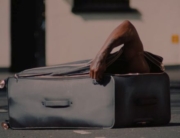This documentary about a snowboarding accident feels trivial at times, but its lack of pretension allows for meaningful moments to creep up on the viewer. The first example of this is the crash itself, Olympic hopeful Kevin Pearce’s traumatic wipeout, which director Lucy Walker, eschewing foreshadowing, presents in a manner that mirrors the unexpected nature of accidents.
Snowboarding is a relatively new sport, and The Crash Reel depicts how its rapidly evolving nature, with tricks becoming exponentially more complex, has pushed its practitioners to the limits of physical tolerance. Such big risks must have big payoffs for those who like to take them: Pearce, whose fall leaves him with massive brain damage, still clamors to get back on the board.
Walker skillfully weaves home videos with archival news footage to portray what has instilled his drive. One metaphorical moment shows him as a toddler, crying because, his mother explains, he has climbed up too high on the furniture and doesn’t know how to get down. This image is eerily echoed when Pearce meets a fellow brain-damaged snowboarder. Multiple crashes have left this other man in a permanent second infancy: He literally no longer knows his knee from his elbow. Still, he wants to go back for more.
“Why?” asks Kevin’s mother, why do these men will themselves to destruction? Providing a motive beyond the adrenaline rushes, two-time Olympic champion Shaun White is set up as a foil to our hero, a Hotspur driving him on in a perpetual quest for more. Pearce is painted—by his own friends, mind—as the more well-rounded human, balancing competition with camaraderie. White is contrasted as a single-minded lone wolf, once spending millions of dollars to create his own personal half-pipe then refusing to let anyone go near it. Interviews with White offer little to challenge this image. He comes across as too polished to be sincere, even having has his own hair and make-up person listed in the credits.
Whether or not White’s heart really is three sizes too small, Pearce’s interpersonal life, centered on his family, is singular and the most compelling aspect of the film. In a welcome contrast to the drama of reality TV, this family navigates its turbulent sentiments in a loving and articulate manner. David, a brother who has Down syndrome, speaks of his disability with wisdom and honesty; a moment that draws parallels between his and Kevin’s conditions is the emotional climax.
So while The Crash Reel flirts here and there with grander purposes—the lack of proper health insurance for athletes, for instance—it never settles on a single theme. The filmmakers’ hope seems to be that the documentary is richer for being more Pearce than White, more a balance of different elements. Overly long and with a somewhat manipulative indie soundtrack, the results are not perfect. But the last image, of the Pearce family in a pre-meal moment of silence, lingers. In meditation, thoughts are acknowledged, examined, and allowed to pass through the mind, exhaled. Ultimately, it will be up to Kevin Pearce to not let this trauma consume him, but let it pass through like breath.

















Leave A Comment